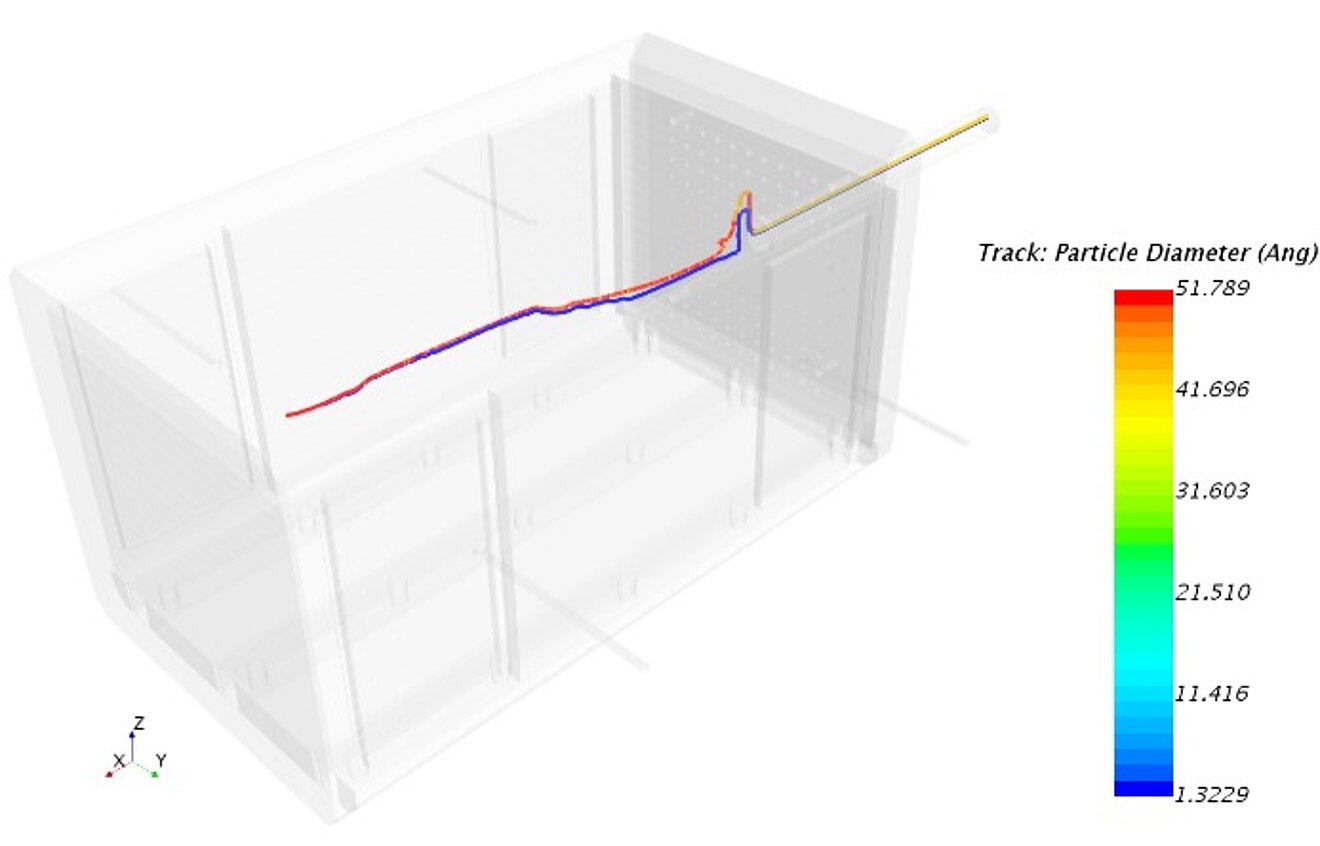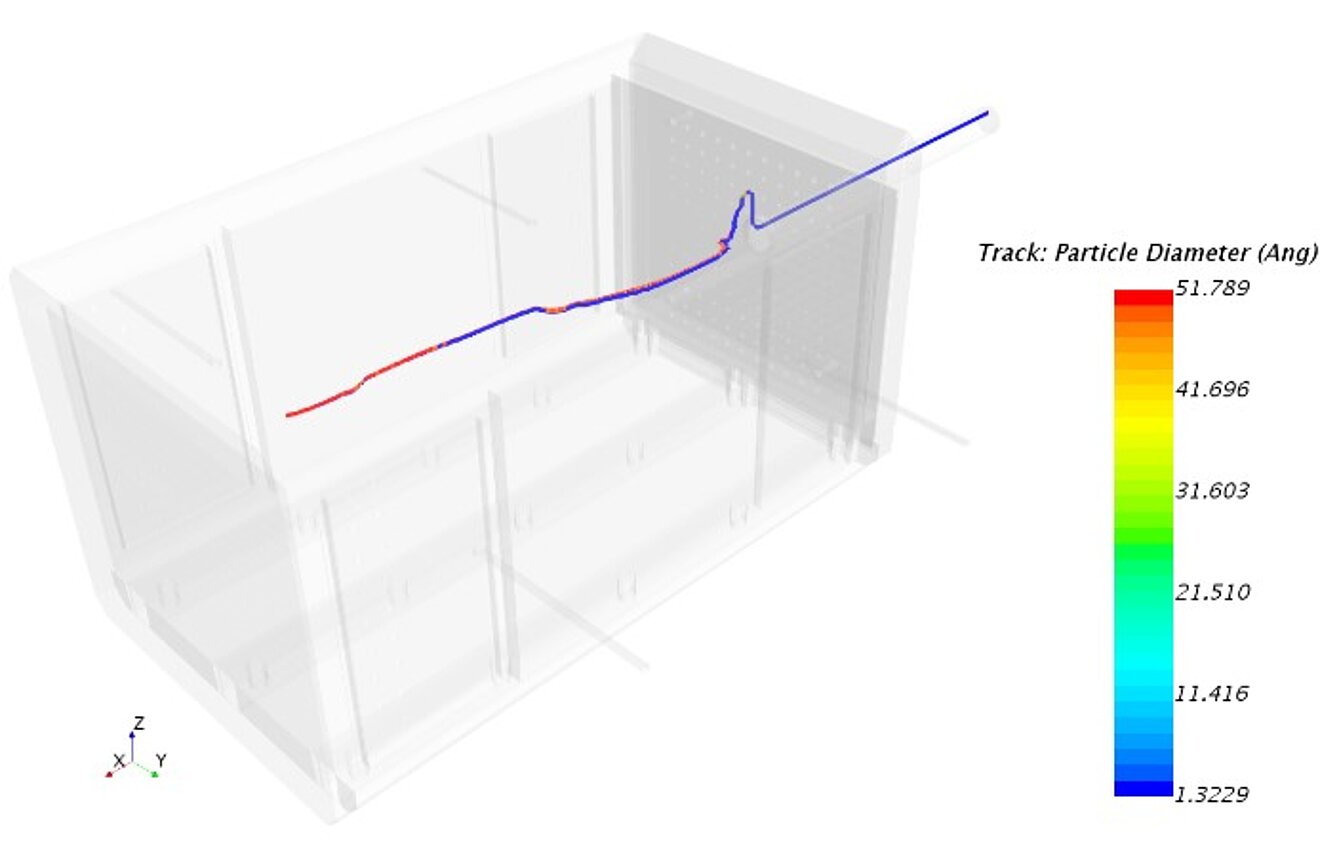Of MIM and myths

At our workshop on additive manufacturing on 11.11.2021, Dr Timm Ohnweiler from the company Carbolite Gero gave a very interesting presentation on a joint project, the content of which I would like to share with you.
Before I go any further, a few definitions so that you can follow along easily:
Definitions
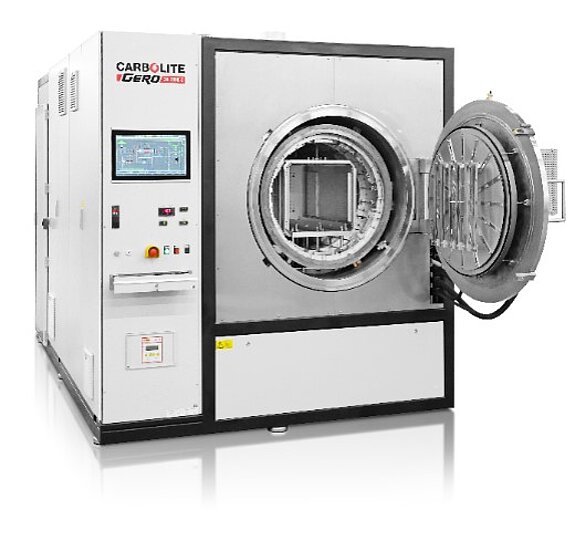
Compounding
Compounding is a process in which molten polymers are mixed with other additives.
MIM
Metal Injection Moulding (MIM) is a 3D manufacturing process consisting of 3 steps: compounding, injection, debinding and sintering.
In this process, metal powder is compounded together with an organic binder to form a starting material. Further processing is done by injection moulding. This moulding process makes it possible to produce complex parts in large quantities with tight tolerances, thin wall thicknesses and excellent surfaces. Due to the special features of the process, even materials that are difficult or impossible to machine can be processed without restrictions.
Myths
Myths claim validity for the truth they assert. The myth stands in contrast to the logos, which attempts to substantiate the truth of its claims by means of rational evidence.
Note from me: I will supplement "rational" with the term "physical".
Debinding myths
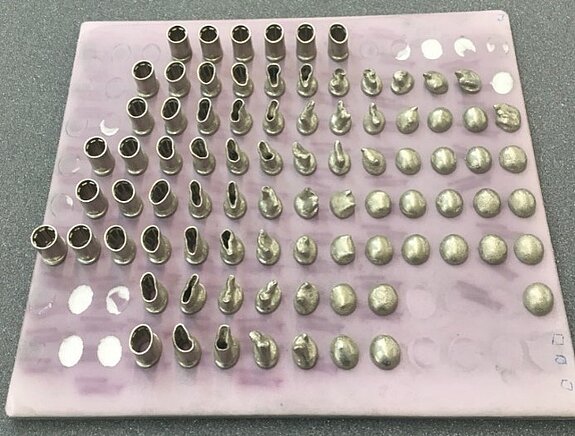
In the following, let us look at one step of the MIM process, namely debinding. Here, two statements are in the foreground:
- LAMINAR GAS FLOW
Optimal debinding only occurs through a laminar gas flow. Therefore, the pressure must be lowered in the debinding phase. - HEAVY FORCE
In the debinding phase, the binder evaporates and must be carried away from the component. The gas outlet must be at the bottom, as the particles move downwards following gravity.
Carbolite Gero manufactures furnaces in which both debinding and sintering, i.e. the "caking" of the metal powder, take place. If the debinding does not work properly, the result is the same as baking Christmas biscuits with a too thin dough, they melt.
The resulting product is then neither precise nor complex, does not have an excellent surface, but is simply scrap (see figure 2).
Time for the Logos - the CFD Simulation
Myth 1: The Laminar Gas Flow
With the help of flow simulation, we, Carbolite Gero and Merkle & Partner, approached the topic together and, in a first step, investigated the influence of laminar and turbulent flows on simple geometries. You can see the result in Figure 3.
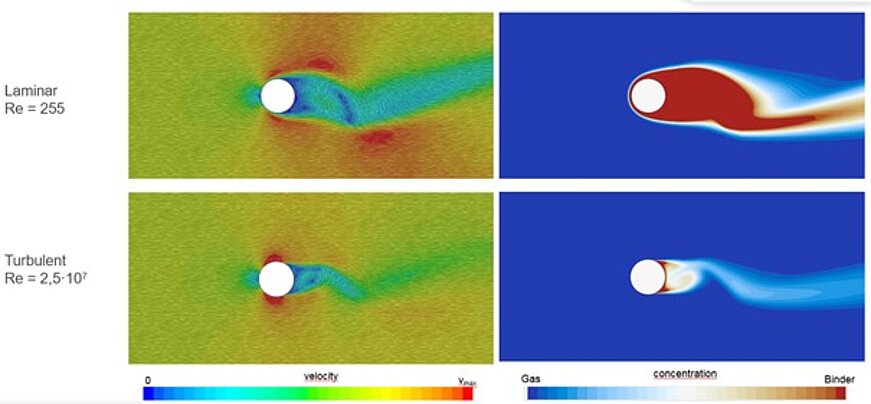
A cushion with a high binder concentration forms around the specimen in a laminar flow. Since debinding is a diffusion process that works better at high concentration differences, the turbulent flow has a clear advantage here.
The different results on the experimental plate (see Figure 2) clearly show that the conditions on the plate must be very different. A classic task for further optimisation of the flow via CFD.
The first myth, that laminar gas flow provides better debinding, is thus clearly false.
Myth 2: The influence of gravity.
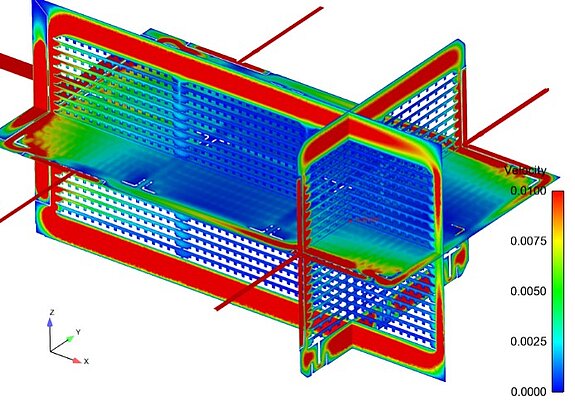
To analyse the influence of gravity on the binder particles, we looked at the flow conditions in the entire oven at different particle sizes and at pressures of 1 mbar, 100 mbar and 800 mbar.
The flow conditions in the oven are almost identical at all the pressures examined, and the changes in the particle trajectories are not visible to the naked eye even at different particle sizes.
Thus, it can only be noted here that the influence of gravity only exists in myth and thus the outlet does not necessarily have to be at the bottom.
According to Dr. Timm Ohnweiler, the implementation of the findings at Carbolite Gero in a new kiln design led to an approximately 30% better yield of good parts. If the customer is satisfied, we are too 😊
Sometimes you have to heretically question the myths and dogmas of the industry in order to build better machines.
If we can also help you to challenge long-established opinions, I look forward to hearing from you.
Your Stefan Merkle

PS: In autoclaves for the aviation industry, we have been able to reduce throughput times by up to 40% by optimising the flow conditions.
PPS: My oven at home shows different browning on the baking tray when baking Christmas biscuits. Maybe I should talk to the manufacturer here too....
PPPS: Carbolite Gero and Merkle & Partner wish you a Merry Christmas and a Happy New Year.
